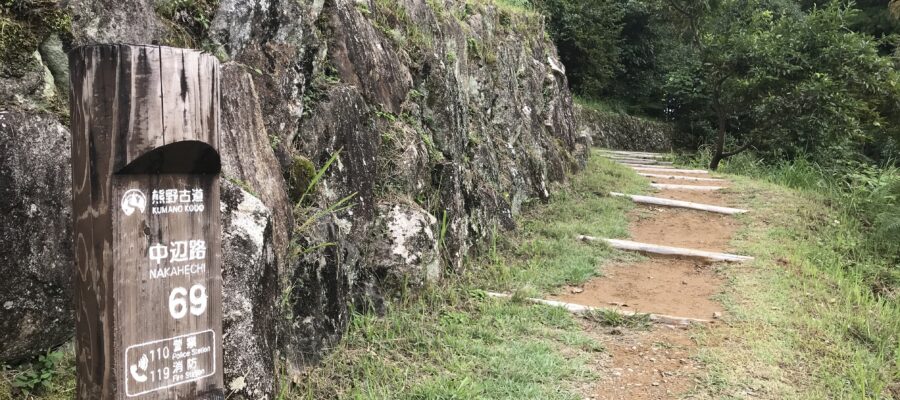蘇生の森へ入っていく
水呑王子を越えると、熊野古道らしい道に入っていきます。多くの人がイメージする熊野古道とは、スギやヒノキの木立の中、苔むした石畳や石段でしょうか。少しずつ、そのイメージに近い景色が現れてきます。路傍の石碑を見ると、「蘇生の森 熊野古道」と書いてあります。熊野には生まれ変わるために来ると聞いたことがあります。蘇生の森とは、まさに黄泉帰りの道なのかも知れません。
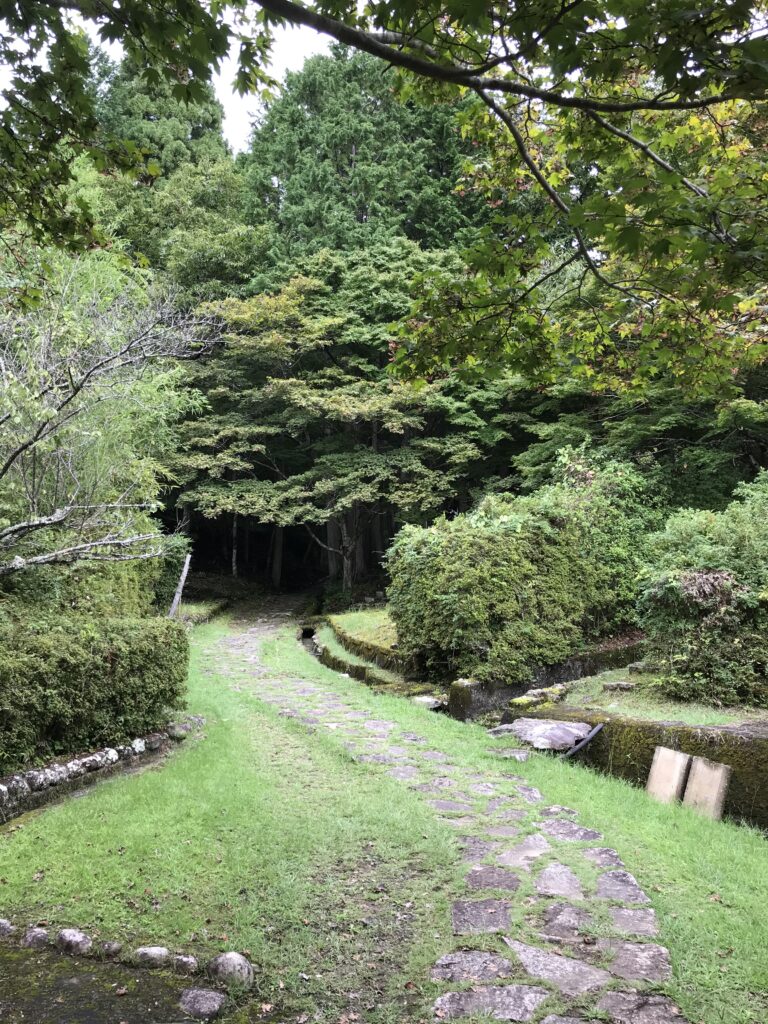
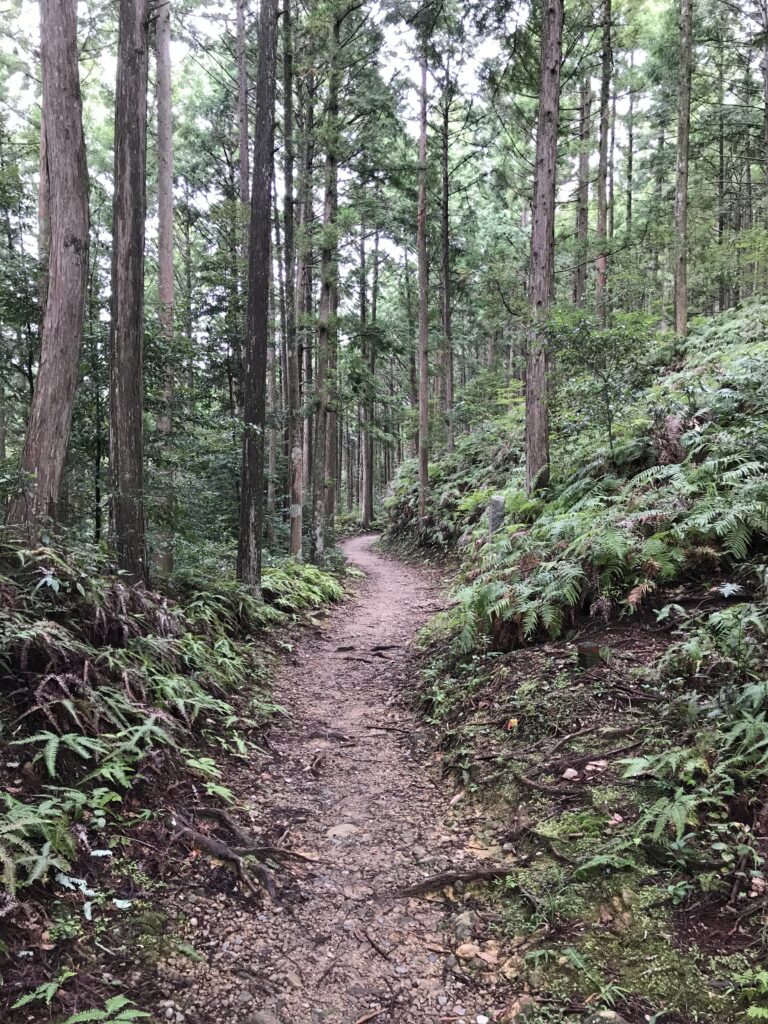
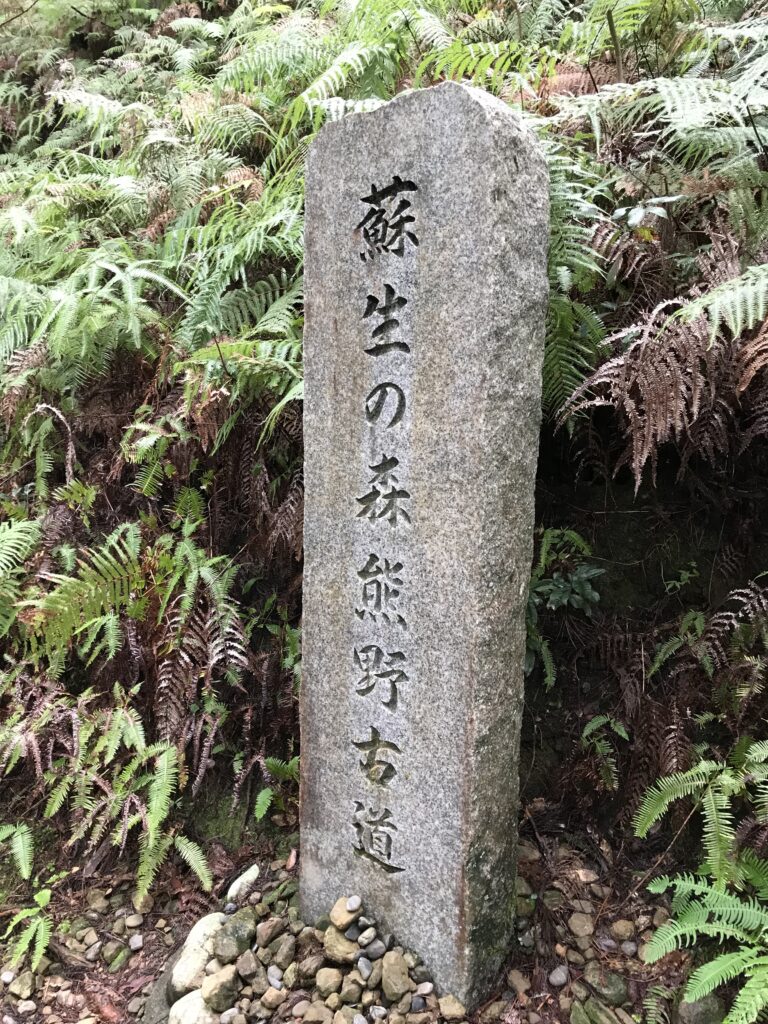
路の斜面にはシダ類の植物が茂っています。雨が多いのでしょうか。先日歩いた三重県の伊勢から熊野につづく伊勢路は雨の多い地方で、日本有数の降雨量を誇る尾鷲もあるくらいです。そこもシダが多かったと思いますが、和歌山川のこちらもかなり茂っています。山の木が木陰を作ってくれているので、直射日光に苦しむことなく歩きやすいです。
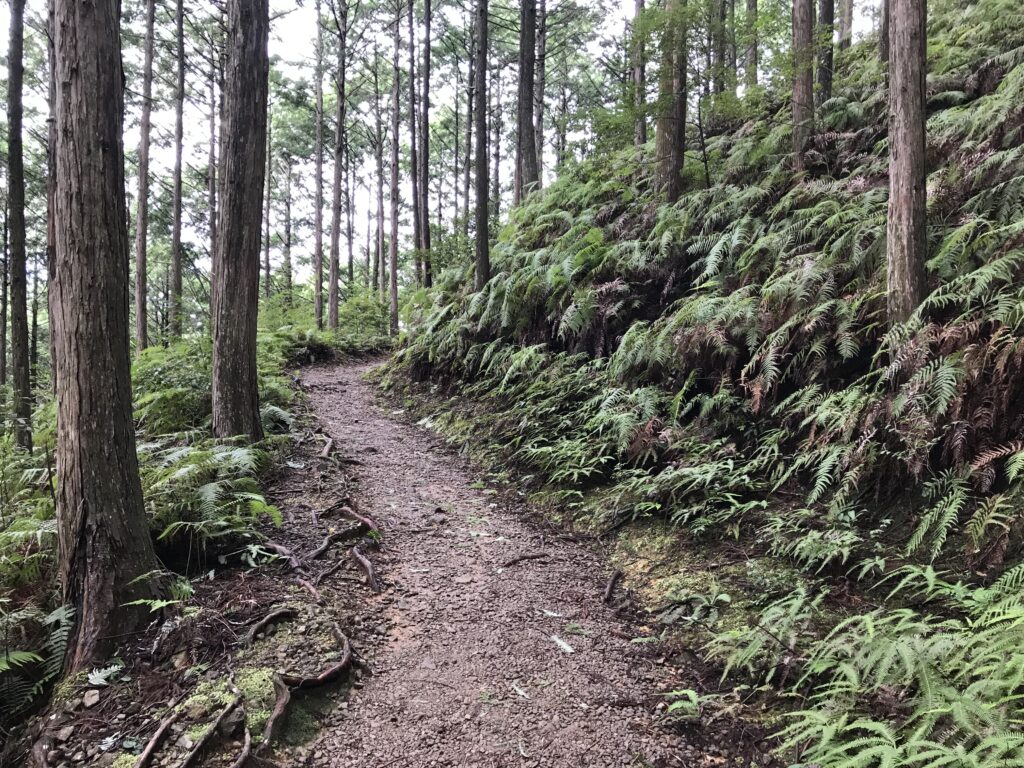
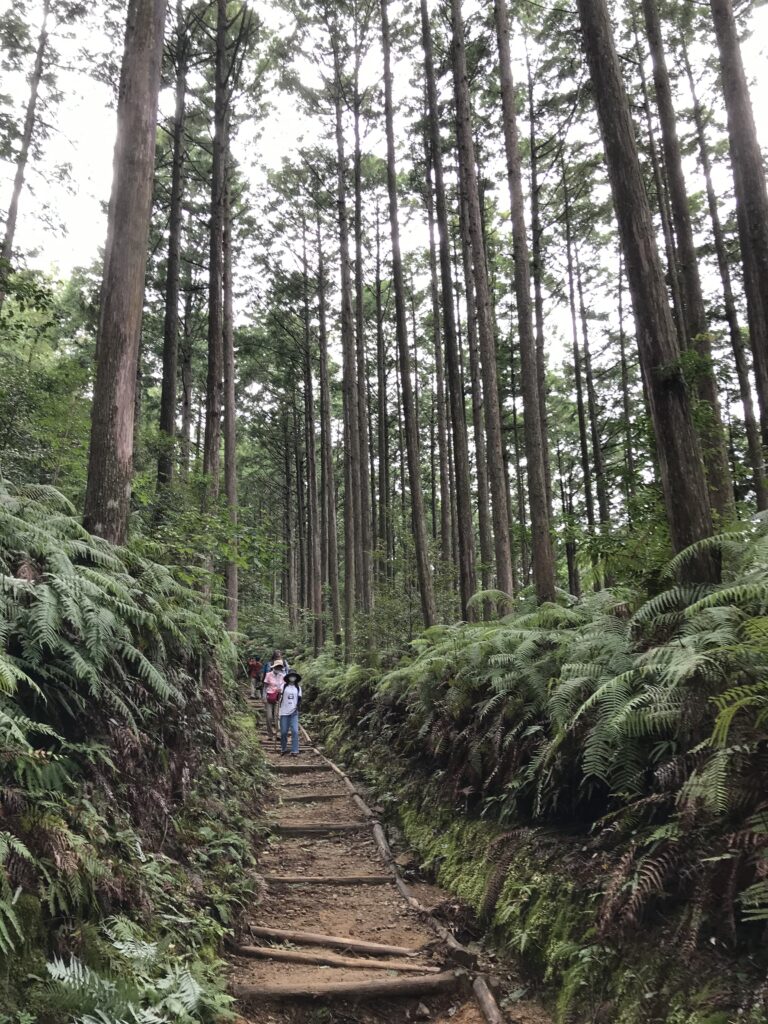
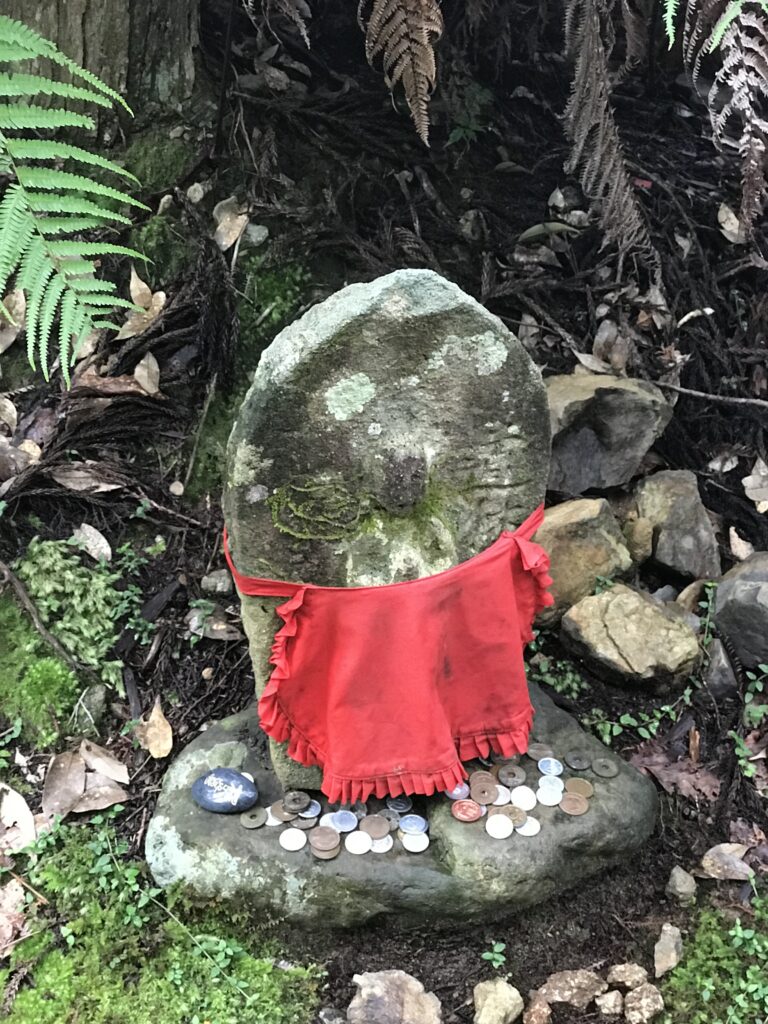
次の伏拝王子へ進む
木々の中を抜けると、舗装された道に出ました。次のポイントの伏拝王子が示されています。山々がとぎれなく連なる景色を見ながら、点在する民家の間を抜けていきます。ガイドさんに教えてもらいましたが、コロナの前は、熊野古道に来られる方々の6割は海外からの方で、4割が日本人だそうです。既に、海外の方の方が多くなっていました。
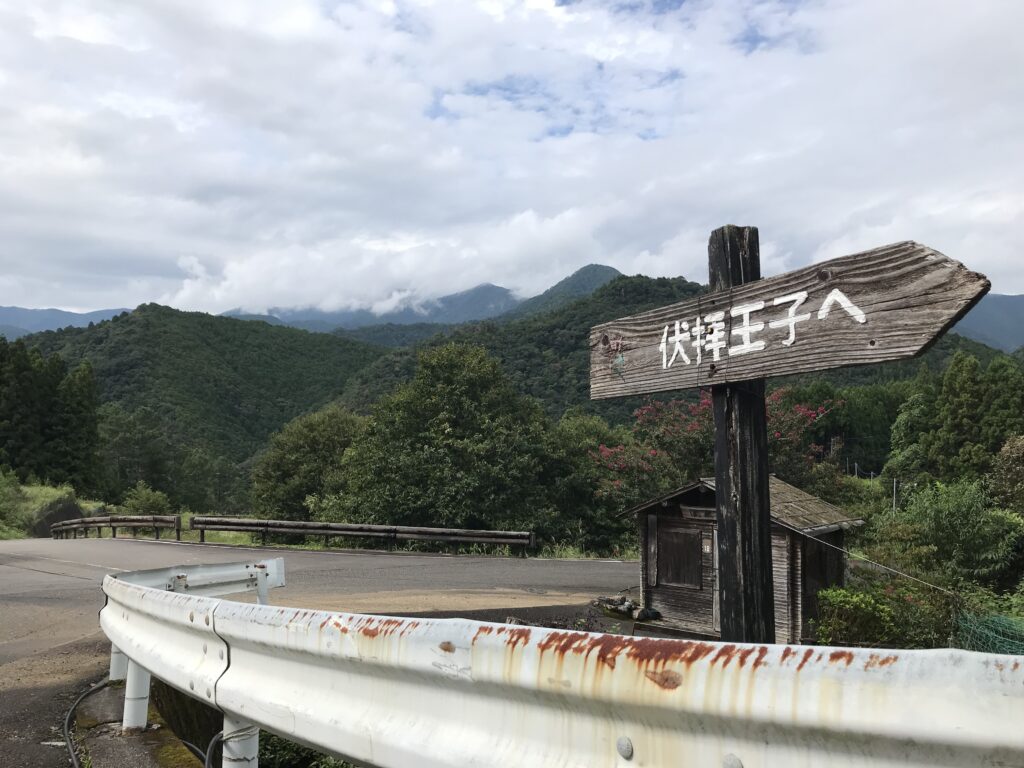
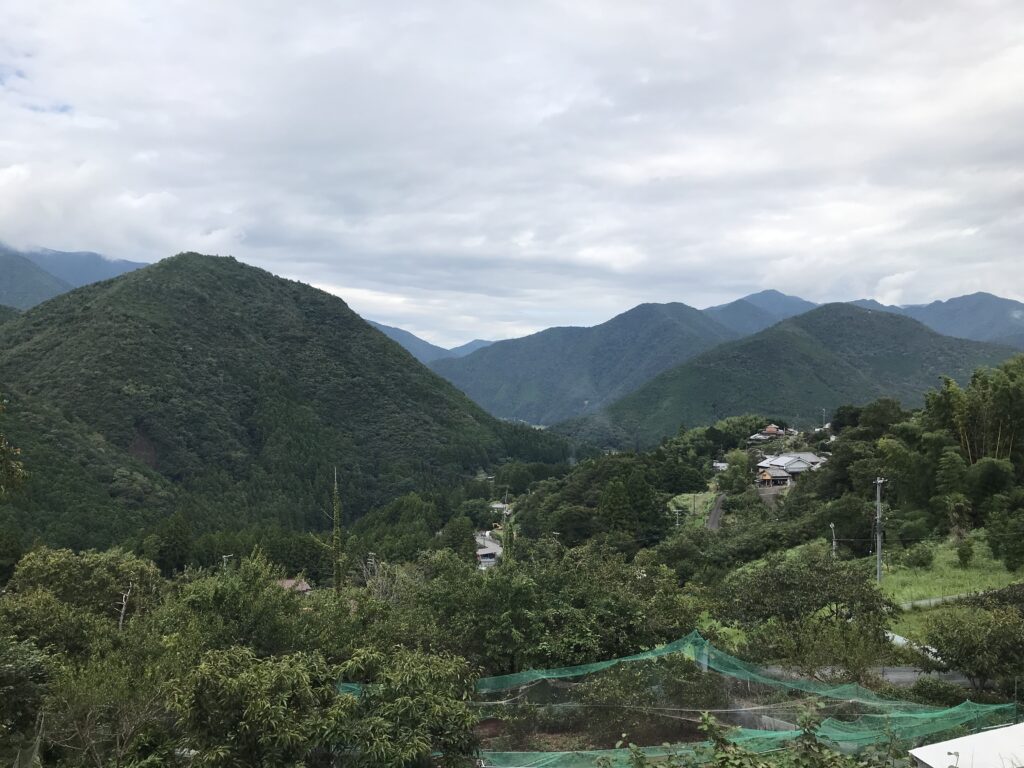
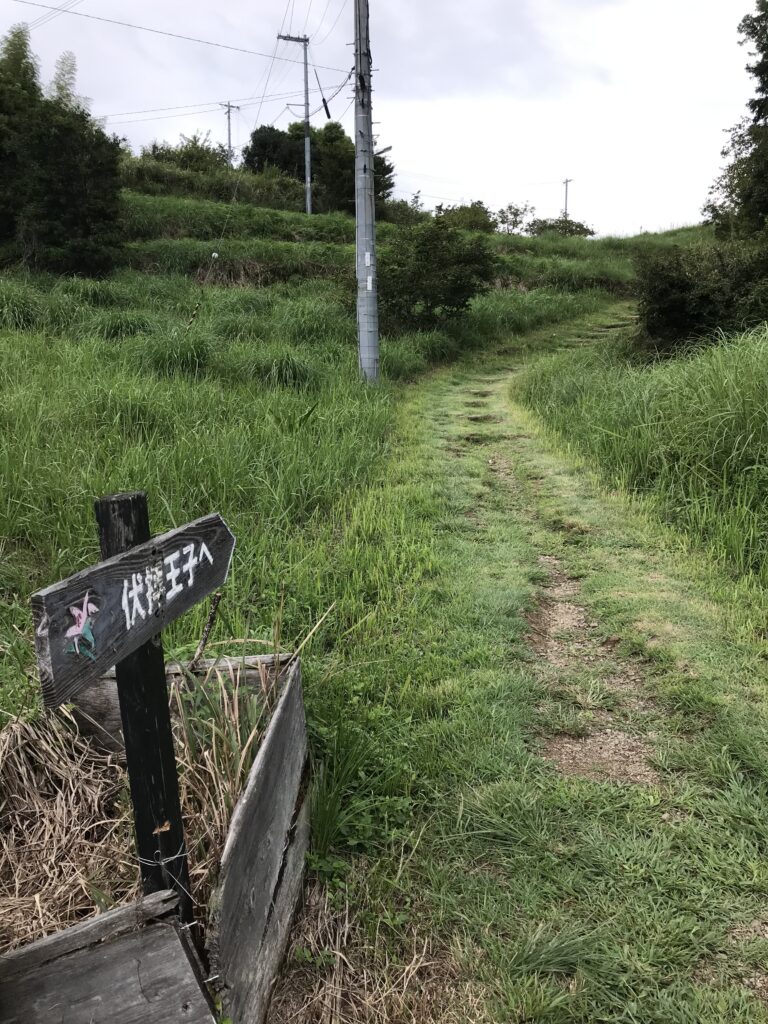
和泉式部の供養塔
しばらく歩いて、伏拝王子に無事に到着です。ここには和泉式部の供養塔があります。平安時代に彼女がこの道を歩いたのです。昔は、険しい道を歩いてきた巡礼者が、ここで初めて熊野本宮大社を目にして、伏して拝んだので、伏拝王子の名が付いたそうです。残念ながら近眼なので、私には眼鏡越しにも見えませんでした。
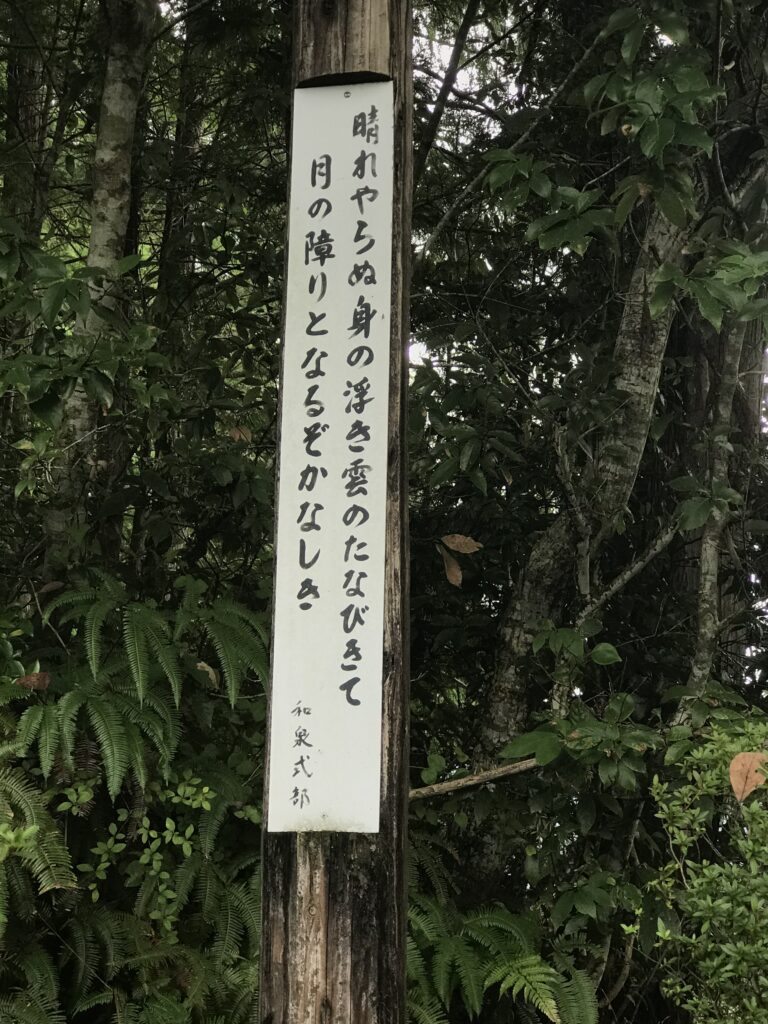
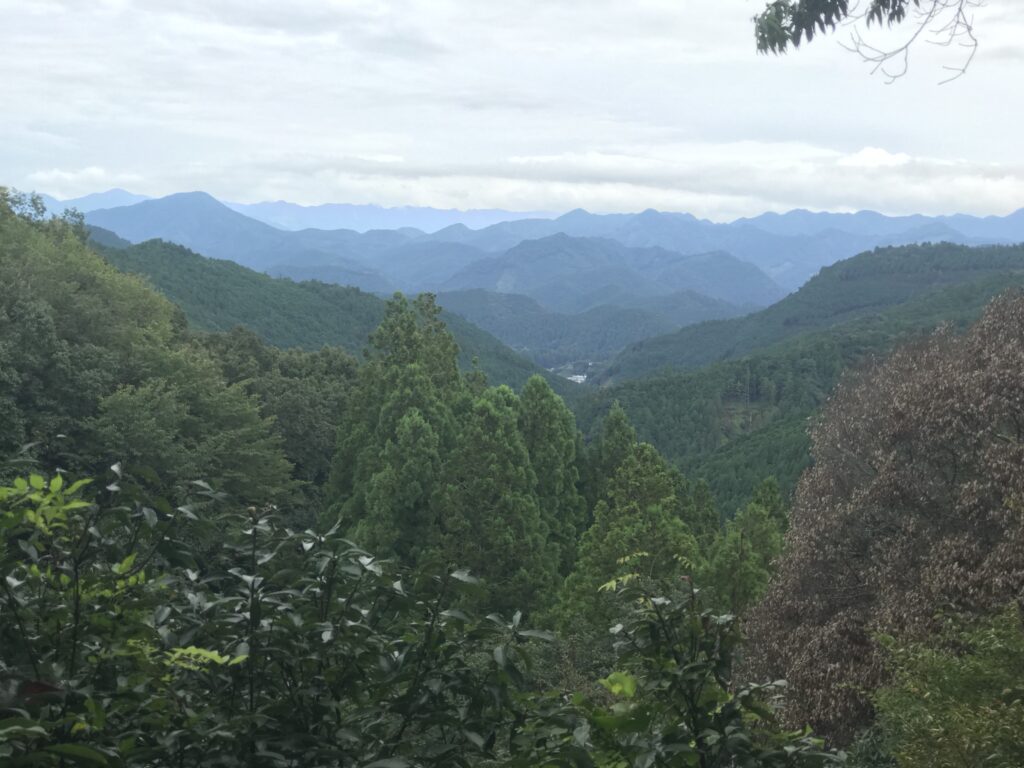
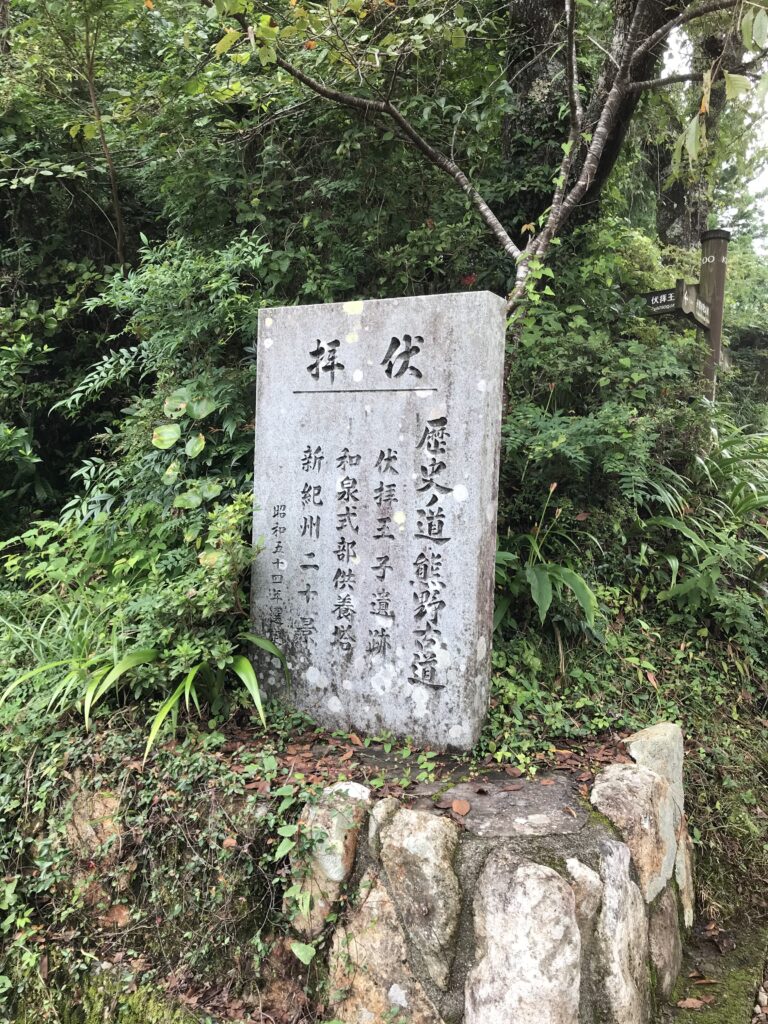
ここからは、熊野本宮大社近くまで、ずっと樹木の茂った山道を歩いていきます。ガイドさんが植物の説明をしてくれますが、さっぱり頭に入りません。道は舗装されていませんが、比較的整備されていて、石段もところどころにあります。
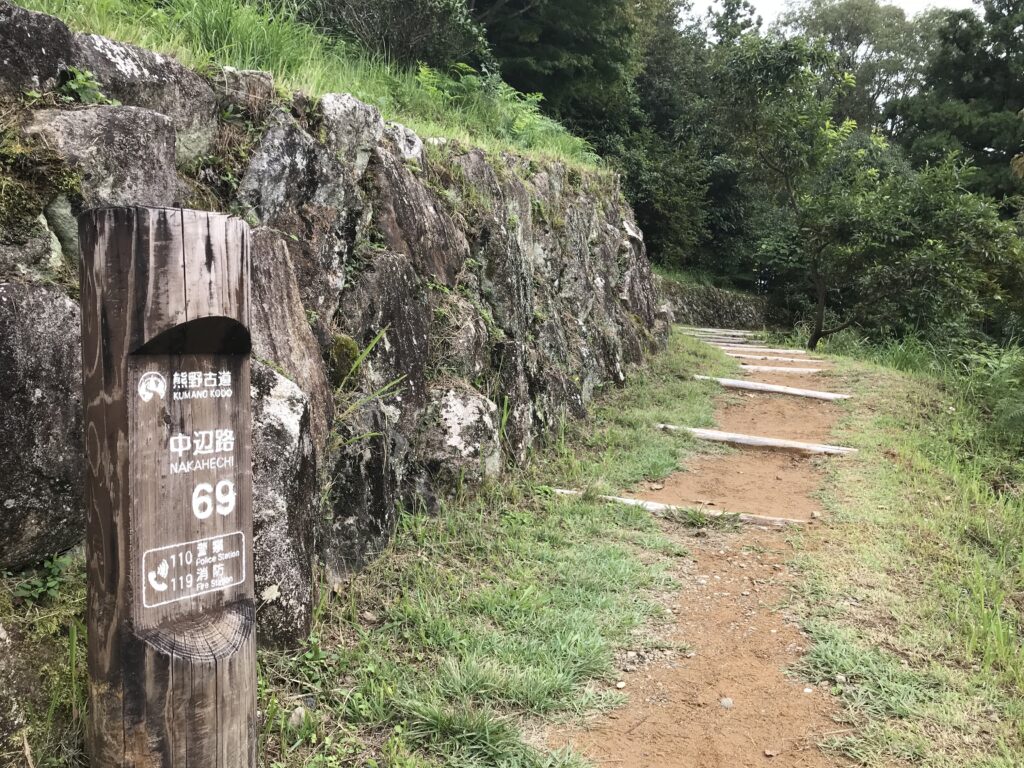
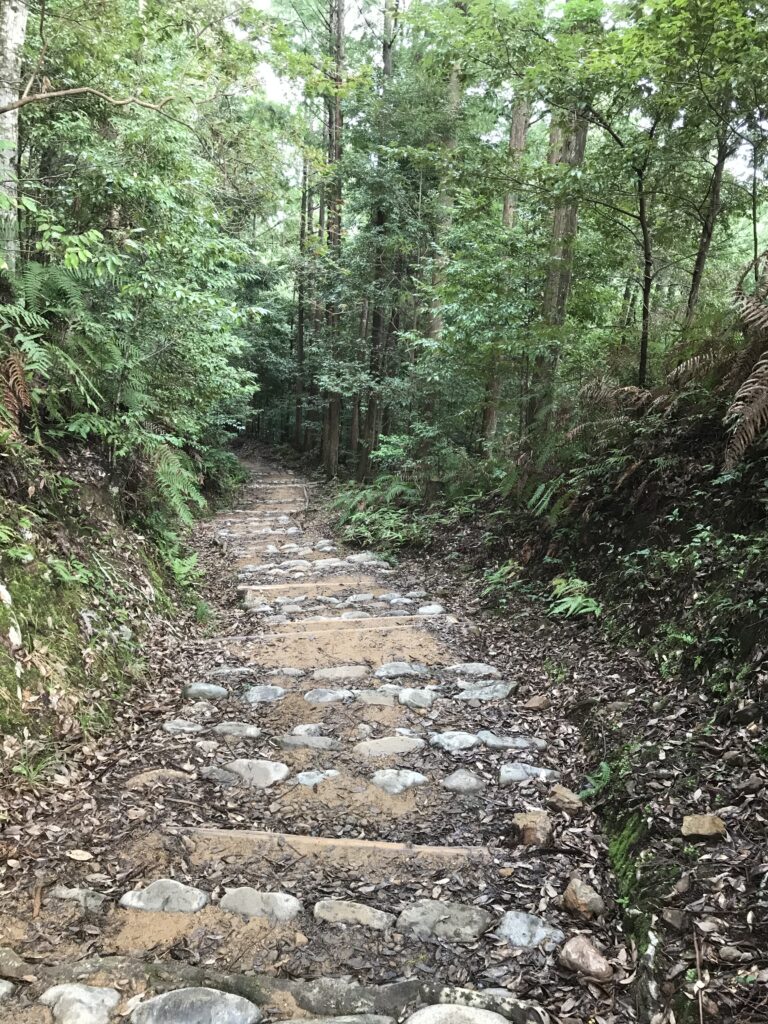
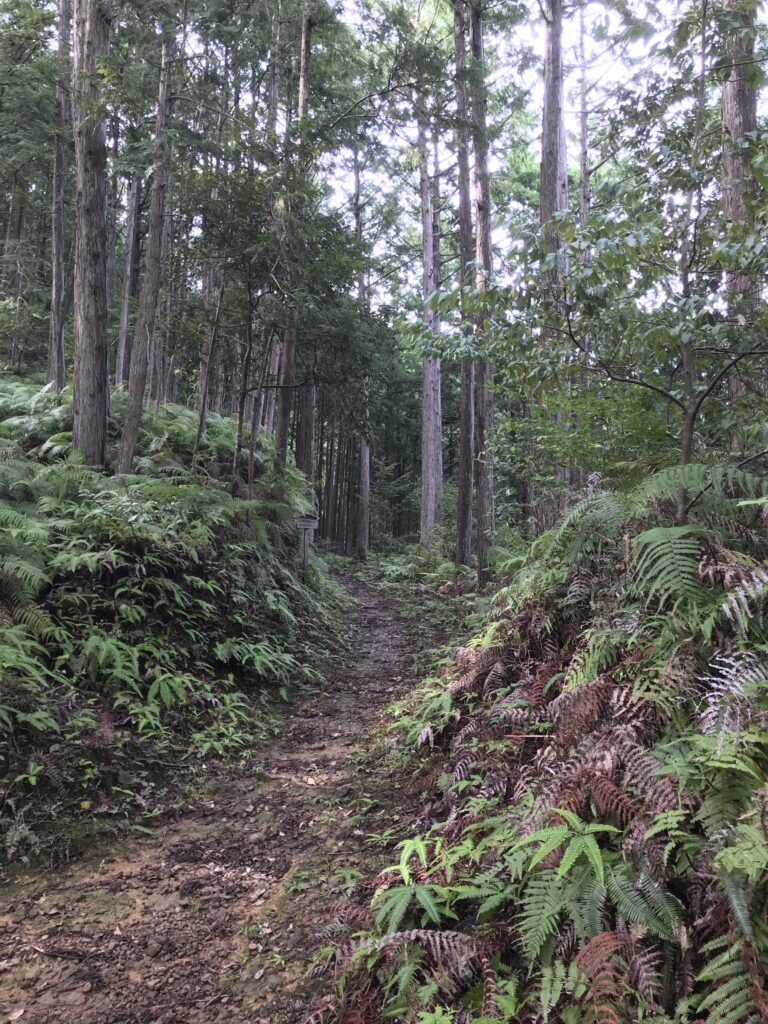
九鬼ヶ口関所
しばらく歩いていると、昔の関所であった場所に着きました。九鬼ヶ口関所と書いてあります。高野山から熊野本宮大社に通じるルートを小辺路(こへち)と呼びますが、その小辺路が、ここで私が歩いている中辺路と合流します。小さな石の道標があります。小さくて、見逃しそうな少し心もとない石の道しるべです。(つづく)
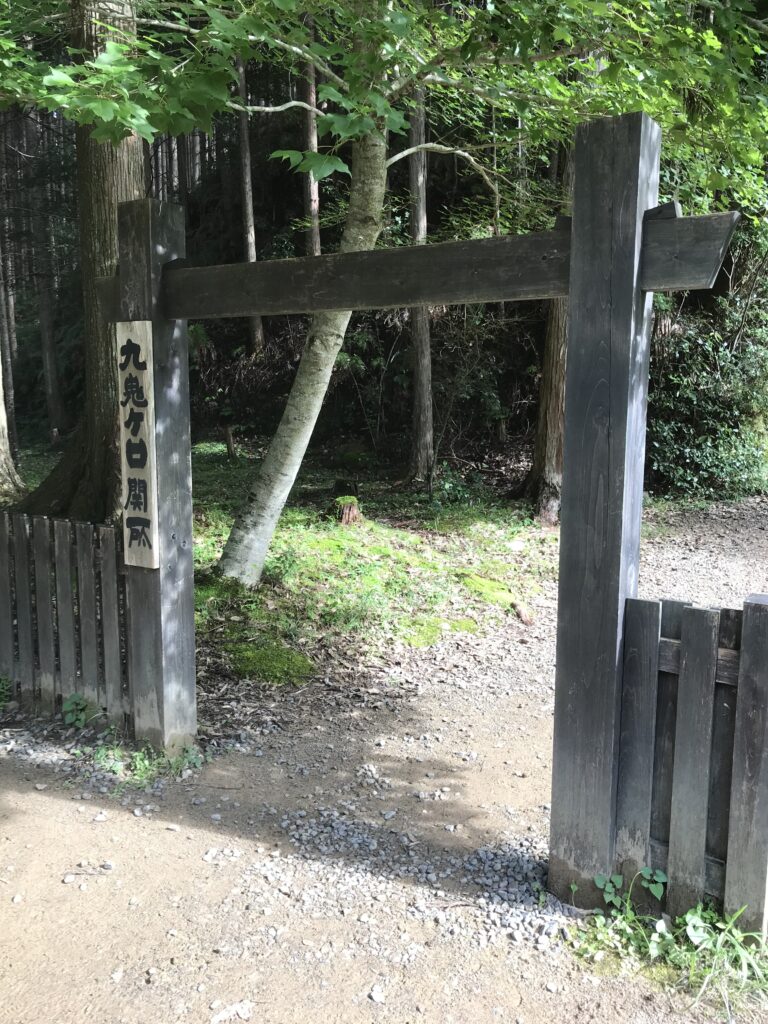
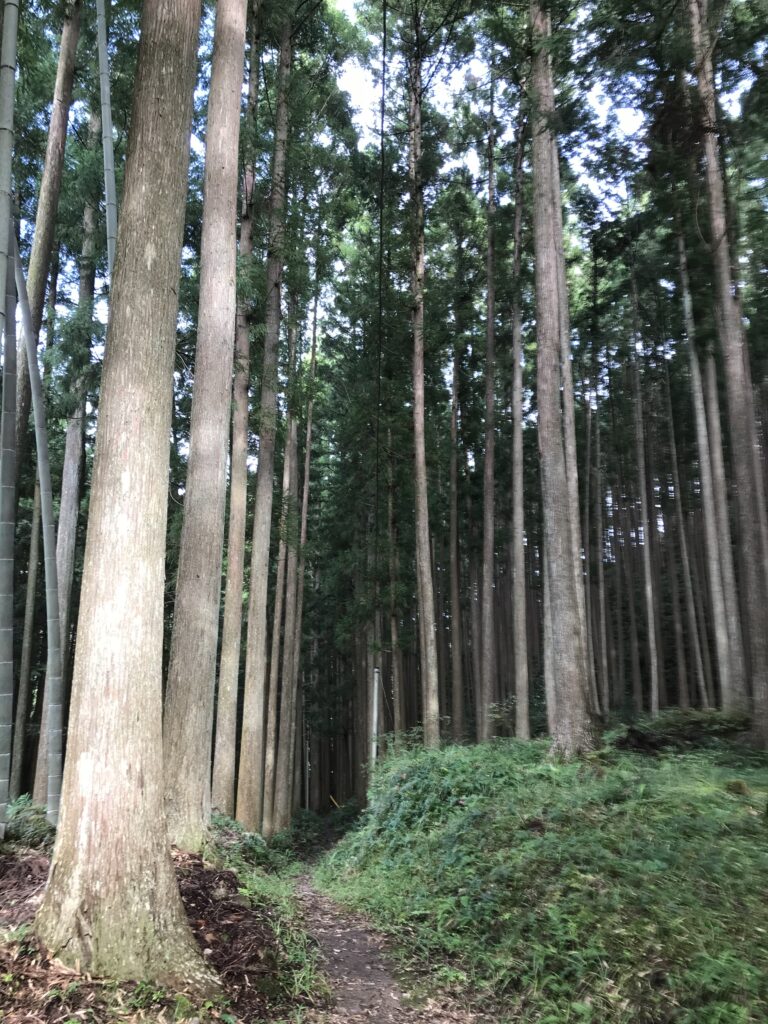

伊勢路を歩く際に役立つ本
一人で歩くとなると地図だけでなく、詳細なランドマークが記載されたルートマップがあると心強いです。東海道、中山道でも同シリーズを出版している山と渓谷社のマップを今回持参しました。
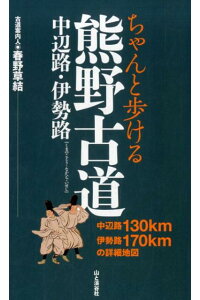
価格:1,650円
(2021/5/1 16:29時点)
感想(4件)
Kumano Kodo (Ancient Road) ①Nakahechi Road II
(Mizunomi Oji ~ Kukigakuchi Pass ) (English)
Entering the Forest of Rebirth
After crossing the Mizunomi Oji, I entered a path that was typical of the Kumano Kodo. Most people imagine the Kumano Kodo to be a mossy stone pavement and stone steps amidst a grove of cedar and cypress trees. Little by little, a landscape close to that image appeared. Looking at the stone monument beside the road, it says, “Forest of Rebirth: Kumano Kodo. I’ve heard that people come to Kumano to be reborn. Perhaps the Forest of Rebirth is the very path to come back to life.
The slope of the path is thick with ferns. I wonder if it rains a lot. The Ise Road that leads from Ise to Kumano in Mie Prefecture, where I walked the other day, is a rainy area, and there is also Owase city, which boasts one of the highest rainfall in Japan. I think there were many ferns there as well, but this part of the Wakayama side is also quite overgrown. The trees in the mountains provide shade, so it is easy to walk without suffering from direct sunlight.
Proceed to the next Fushiogami Oji
After passing through the trees, I came to a paved road. The next point, Fushiogami Oji, is marked. I watched an unbroken line of mountains, and passed through the area of scattered houses. My guide told me that before Covid-19, 60% of the visitors to the Kumano Kodo were from overseas, and 40% were Japanese. Already, there were more people from overseas.
Memorial Tower of Izumi Shikibu
After walking for a while, I arrived safely at Fushiogami Oji. There is a memorial tower for Izumi Shikibu (Japanese ancient female poet) here. She walked this path in the Heian period. In the old days, pilgrims who walked the steep path saw Kumano Hongu Grand Shrine for the first time here and got down to worship it, hence the name Fushiogami (which means to get down and to worship in Japanese) Oji. Unfortunately, I am nearsighted, so I couldn’t see the Grand Shrine even through my glasses.
From here, I walked along a mountain path overgrown with trees all the way to the Kumano Hongu Grand Shrine. The guide explained about the plants, but I couldn’t get any of it into my mind. The path is not paved, but it is relatively well maintained, and there are stone steps in places.
Kukigakuchi Pass
After walking for a while, I came to a place that used to be a pass. It says “Kukigakuchi Sekisho. The route from Koyasan to the Kumano Hongu Grand Shrine is called Kohechi, and this is where the Kohechi joins the Nakahechi route I was walking on. There is a small stone signpost. It’s a small stone signpost, and I’m afraid I might miss it. (To be continued)
Kumano Kodo (Ancienne route) ①Nakahechi Road II
(Mizunomi Oji ~ Kukigakuchi Pass ) (Français)
Entrer dans la forêt de la renaissance
Après avoir traversé le Mizunomi Oji, je suis entré dans un chemin typique du Kumano Kodo. La plupart des gens imaginent le Kumano Kodo comme un pavé de pierres moussues et des marches en pierre au milieu d’un bosquet de cèdres et de cyprès. Petit à petit, un paysage proche de cette image est apparu. En regardant le monument de pierre au bord de la route, on peut lire : “Forêt de la renaissance : Kumano Kodo. J’ai entendu dire que les gens viennent à Kumano pour renaître. Peut-être que la forêt de la renaissance est le chemin même pour revenir à la vie.
La pente du chemin est couverte de fougères. Je me demande s’il pleut beaucoup. La route d’Ise qui mène d’Ise à Kumano dans la préfecture de Mie, où je me suis promené l’autre jour, est une zone pluvieuse, et il y a aussi la ville d’Owase, qui se vante d’avoir l’une des plus fortes précipitations du Japon. Je crois qu’il y avait là aussi beaucoup de fougères, mais cette partie du côté de Wakayama est aussi assez envahie par la végétation. Les arbres dans les montagnes fournissent de l’ombre, il est donc facile de marcher sans souffrir de la lumière directe du soleil.
Passez au Fushiogami Oji suivant.
Après avoir traversé les arbres, je suis arrivé sur une route pavée. Le prochain point, Fushiogami Oji, est marqué. J’ai observé une ligne ininterrompue de montagnes, et j’ai traversé une zone de maisons éparpillées. Mon guide m’a dit qu’avant le Covid-19, 60% des visiteurs du Kumano Kodo venaient de l’étranger et 40% étaient des Japonais. Aujourd’hui, il y a plus de personnes venant de l’étranger.
Tour commémorative d’Izumi Shikibu
Après avoir marché pendant un certain temps, je suis arrivé sans encombre à Fukuha Oji. Il y a ici une tour commémorative pour Izumi Shikibu (ancienne poétesse japonaise). Elle a parcouru ce chemin pendant la période Heian. Autrefois, les pèlerins qui parcouraient ce chemin escarpé voyaient pour la première fois le Grand sanctuaire de Kumano Hongu et descendaient pour le vénérer, d’où le nom de Fushiogami (qui signifie descendre et vénérer en japonais) Oji. Malheureusement, comme je suis myope, je n’ai pas pu voir le Grand sanctuaire, même avec mes lunettes.
De là, j’ai marché le long d’un chemin de montagne envahi d’arbres jusqu’au grand sanctuaire de Kumano Hongu. Le guide m’a expliqué les plantes, mais je n’ai pas réussi à m’en imprégner. Le chemin n’est pas pavé, mais il est relativement bien entretenu, et il y a des marches en pierre par endroits.
Col de Kukigakuchi
Après avoir marché un moment, je suis arrivé à un endroit qui était un col. Il est écrit “Kukigakuchi Sekisho”. La route de Koyasan au Grand Sanctuaire de Kumano Hongu est appelée Kohechi, et c’est ici que le Kohechi rejoint la route Nakahechi sur laquelle je marchais. Il y a un petit panneau en pierre. C’est un petit panneau en pierre, et j’ai peur de le manquer. (A suivre)
